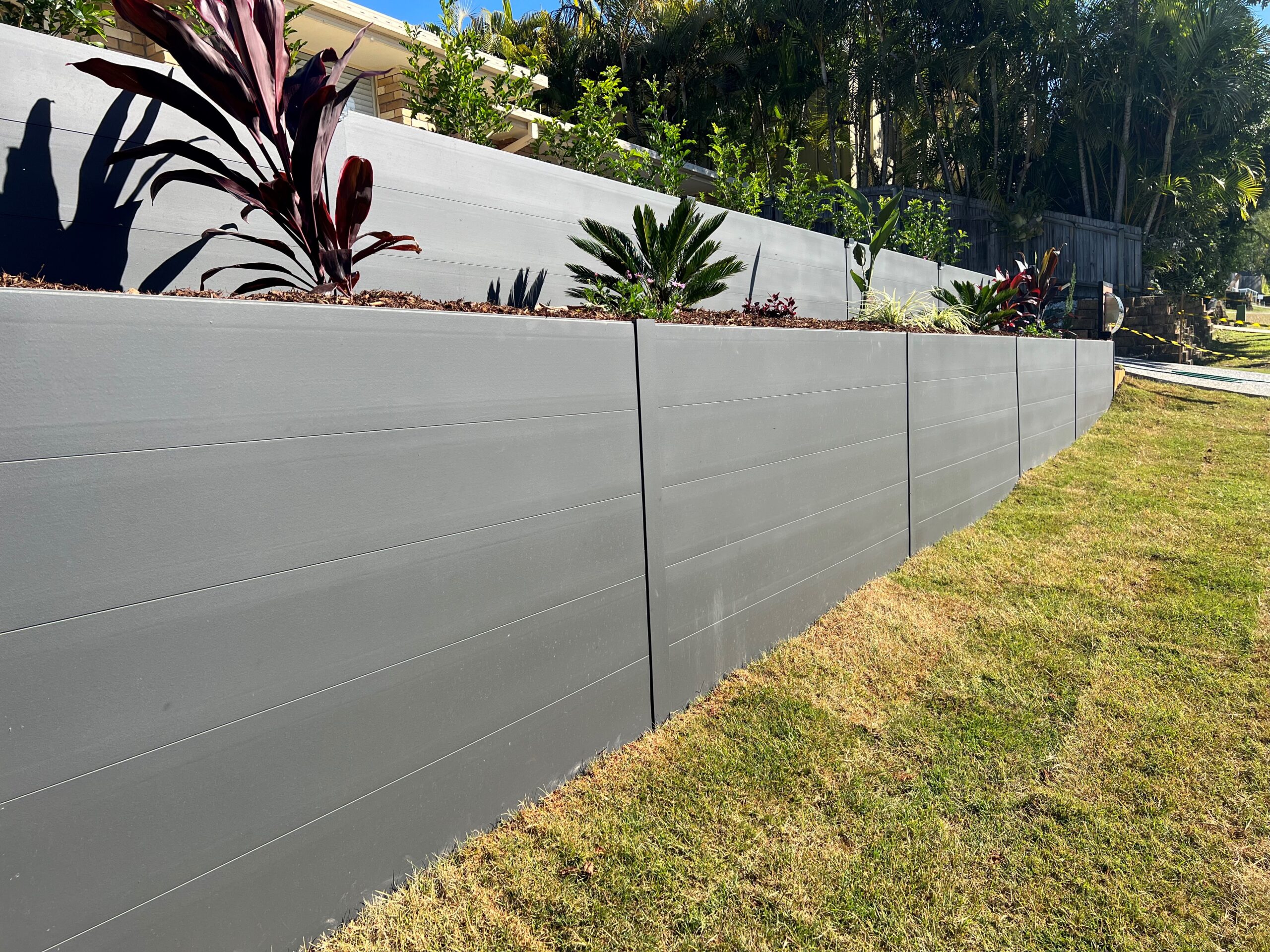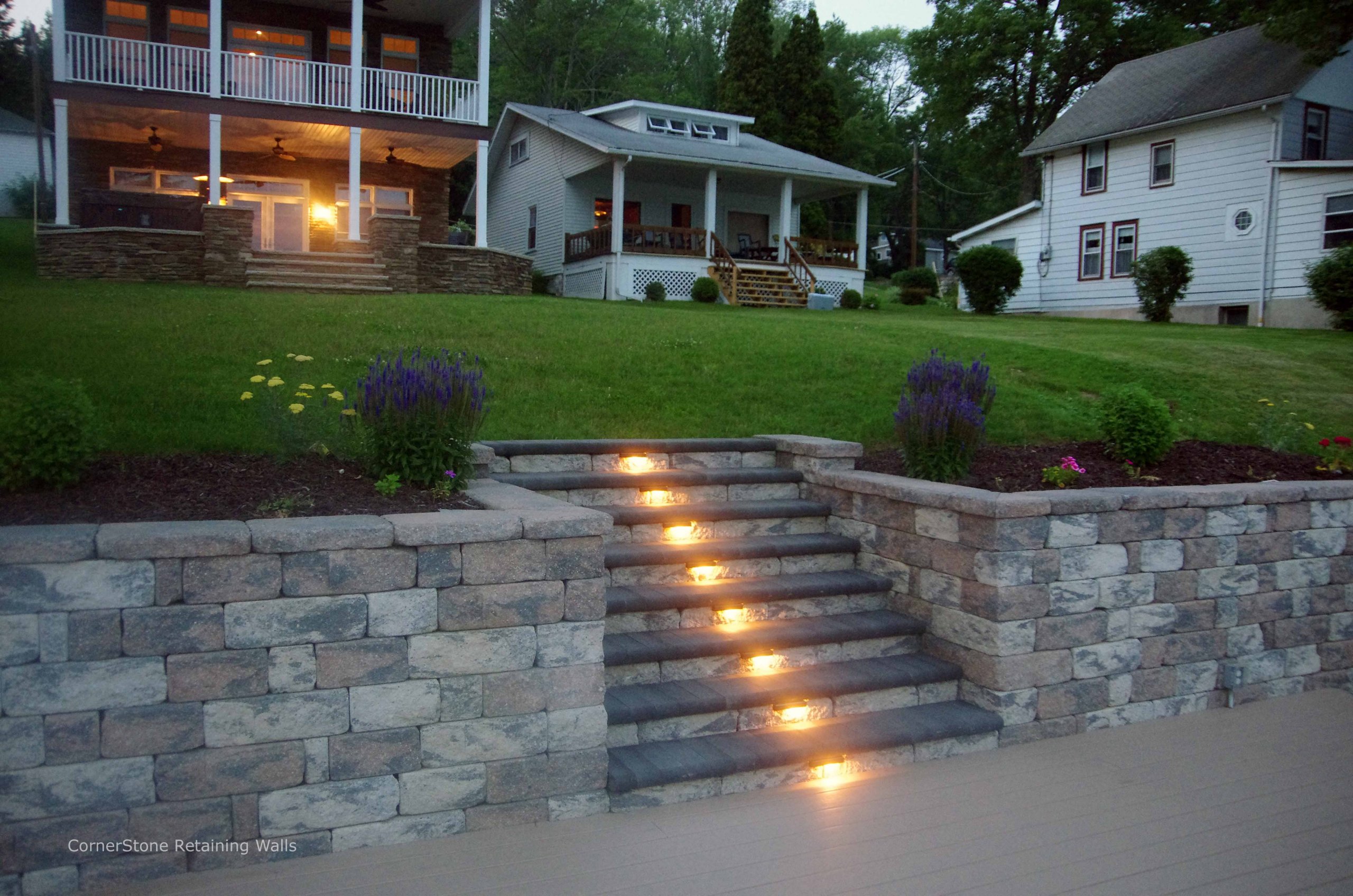Maintaining Walls Sunshine Coast: Cutting-edge Solutions for Erosion Control
Maintaining Walls Sunshine Coast: Cutting-edge Solutions for Erosion Control
Blog Article
Enhancing Property Stability: The Function of Retaining Walls in Dirt Retention and Disintegration Control
In the realm of home monitoring, keeping security and preventing erosion are paramount problems for homeowner and designers alike. Preserving wall surfaces stand as quiet guardians, playing an important duty in soil retention and erosion control. Their importance prolongs beyond simple structural support, influencing the general stability and durability of a home. By checking out the nuances of different types, design considerations, construction techniques, and maintenance tips connected with keeping walls, a much deeper understanding of their critical duty in boosting building security arises. The elaborate dance between design prowess and ecological harmony unveils an engaging narrative that underscores the essential nature of keeping walls in modern land management.
Importance of Retaining Walls in Security
Retaining wall surfaces play an essential duty in holding back soil, preventing disintegration, and developing level surfaces in sloped locations. By offering structural support, retaining walls help to redistribute lateral pressure triggered by soil, stopping landslides and slippage.
Preserving wall surfaces are specifically essential in unequal or uneven terrains where soil erosion is a typical incident. Without appropriate support, dirt disintegration can cause the deterioration of landscapes, jeopardizing the stability of structures and positioning dangers to residents. Keeping walls serve as barriers, maintaining the dirt and stopping it from moving downhill during heavy rains or various other environmental stressors.
Furthermore, retaining wall surfaces use long-lasting benefits by reducing upkeep expenses connected with soil erosion and land instability. By spending in properly designed maintaining walls, homeowner can make certain the long life and sustainability of their landscapes while promoting a aesthetically attractive and safe setting.

Kinds Of Retaining Walls for Disintegration Control
Gravity preserving walls are tough structures that count on their weight to withstand the stress of the soil behind them. Cantilever maintaining wall surfaces, on the other hand, are made with a thicker base and use a bar arm to withstand the soil stress.
For taller wall surfaces or where room is a constraint, anchored keeping walls are typically utilized. When choosing the suitable type of keeping wall for disintegration control, factors such as soil composition, wall elevation, and website problems need to be meticulously taken into consideration to make sure resilient stability and performance.
Layout Factors To Consider for Dirt Retention
Including the concepts of structural engineering and environmental sustainability is essential when considering layout facets for efficient soil retention services. When making for dirt retention, it is important to analyze the details requirements of the site, consisting of soil composition, water drain patterns, and slope security. The height and place of the retaining wall surface are vital factors that affect the overall style. Engineers must additionally think about the pressure put in by the retained dirt and potential side loads to make certain the structure's security over time.
Moreover, the material choice for the maintaining wall is crucial in improving long life and performance. Concrete, wood, gabion baskets, and all-natural stone are typical products made use of in keeping wall surface construction, each with its distinct benefits and factors to consider. Correct drainage systems, such as weep openings and French drains pipes, need to be incorporated into the design to stop water accumulation behind the wall surface, which can bring about architectural failing see here now and erosion.
Construction Techniques for Keeping Wall Surfaces
When applying style considerations for efficient dirt retention, the building and construction techniques for preserving walls play an essential function in guaranteeing structural stability and long-lasting stability. The success of a keeping wall largely depends on the construction methods utilized. One common technique is the gravity wall, which relies upon the weight and mass of the wall surface itself to stand up to the stress of the maintained soil. Gravity walls are suitable for low to tool elevations and are fairly easy to construct. Retaining Walls Sunshine Coast.
One more widely made use of building technique is the cantilevered wall surface, which uses a concrete slab structure that extends in reverse right into the retained dirt. This style provides extra stability and appropriates for medium to high retaining wall surfaces. For taller structures, enhanced soil strategies such as using geogrids or soil nails can be employed to enhance the wall surface's strength and security.

Maintenance Tips for Property Security
To guarantee long-term building stability, routine maintenance practices are essential for preserving the integrity of preserving wall surfaces and stopping disintegration problems. Cleaning the surface area of the maintaining walls can also aid preserve their structural honesty by getting rid of dirt, particles, and plants that might weaken the wall surface over time.
Along with aesthetic assessments and cleaning, it is essential to examine learn the facts here now the drain systems associated with the preserving walls. Ensuring that drains pipes are clear of blockages and functioning effectively can stop water buildup this contact form behind the wall surfaces, which can lead to stress and potential failing. Properly operating drain systems are essential for handling water circulation and decreasing the threat of erosion.
Routinely maintaining and keeping an eye on retaining wall surfaces according to these tips can prolong their life-span and add to the general security of the residential or commercial property.
Verdict
To conclude, maintaining wall surfaces play a crucial duty in improving home stability by preventing soil erosion and keeping soil in area. By utilizing different sorts of maintaining wall surfaces and considering layout and construction techniques, homeowner can properly regulate erosion and maintain the integrity of their land. Routine upkeep of preserving wall surfaces is important to make sure lasting security and security versus erosion. Effectively created and kept preserving wall surfaces are crucial elements in maintaining property stability.
For taller wall surfaces or where area is a constraint, secured maintaining walls are frequently employed. These wall surfaces utilize cables or strips that are secured into the soil or rock behind the wall surface to offer additional assistance. When picking the appropriate type of retaining wall surface for erosion control, variables such as soil composition, wall surface height, and website conditions must be meticulously considered to guarantee lasting security and effectiveness.
One common method is the gravity wall, which counts on the weight and mass of the wall itself to withstand the pressure of the preserved dirt. Cleaning up the surface area of the keeping wall surfaces can likewise assist maintain their architectural integrity by eliminating dust, debris, and vegetation that might weaken the wall over time.
Report this page